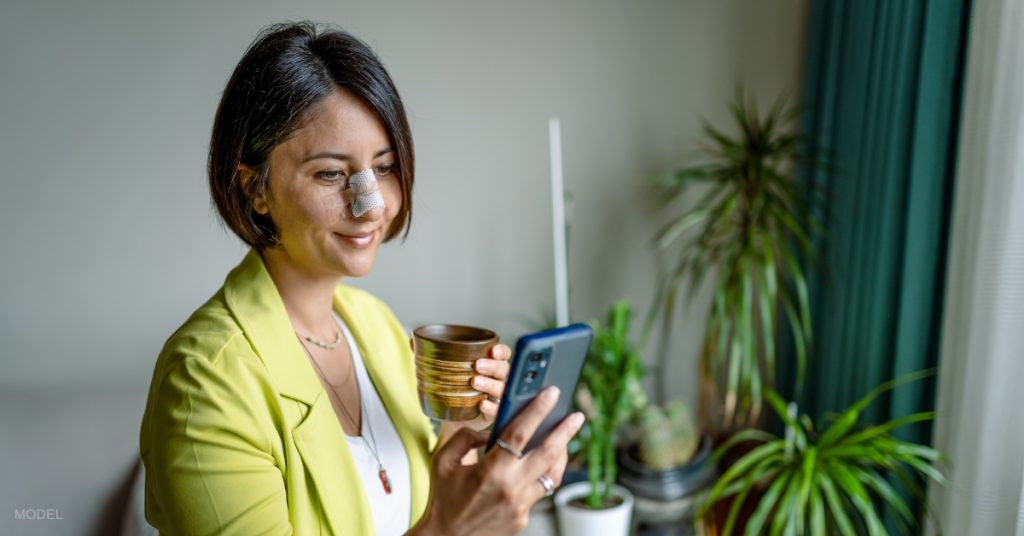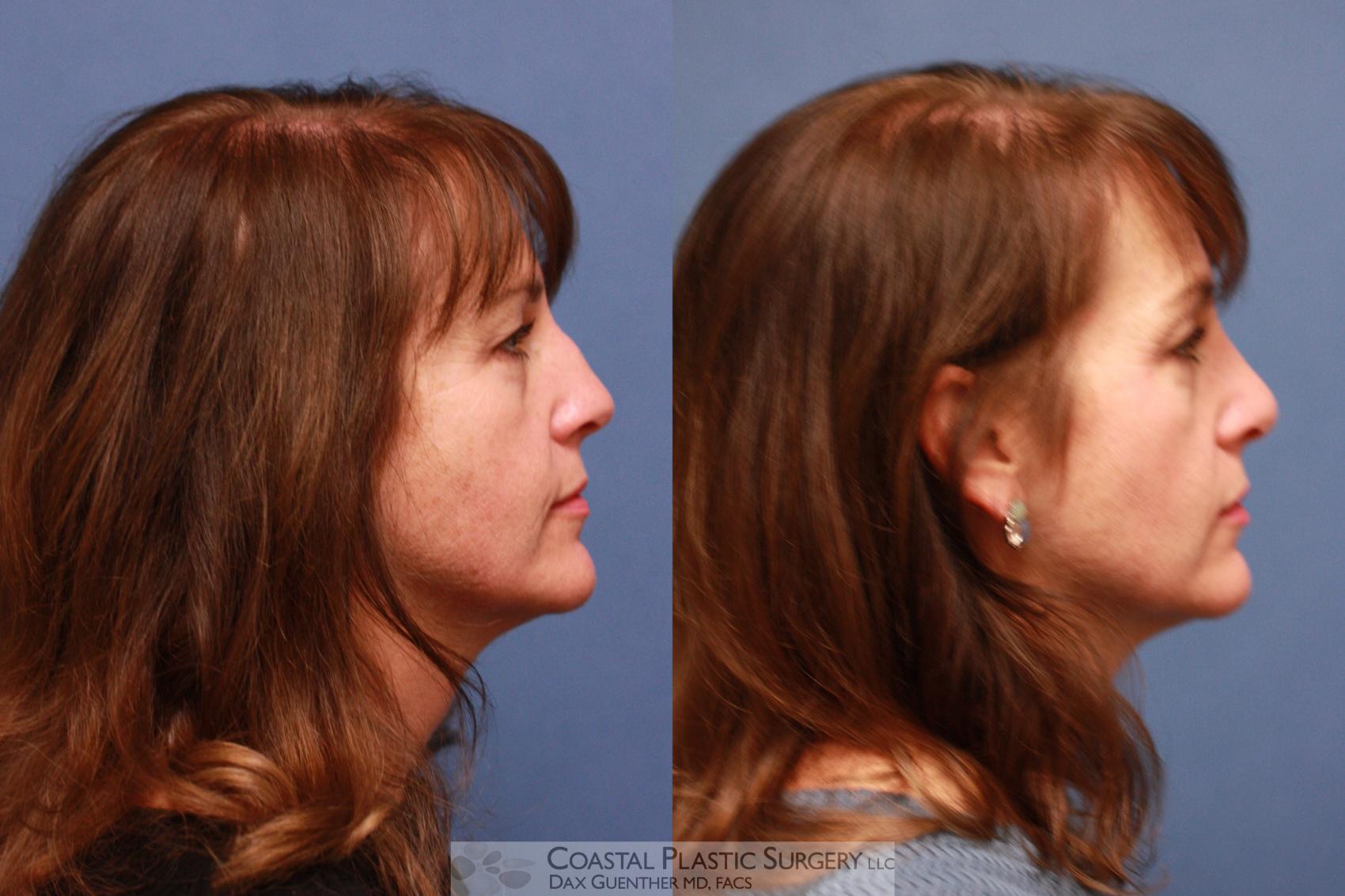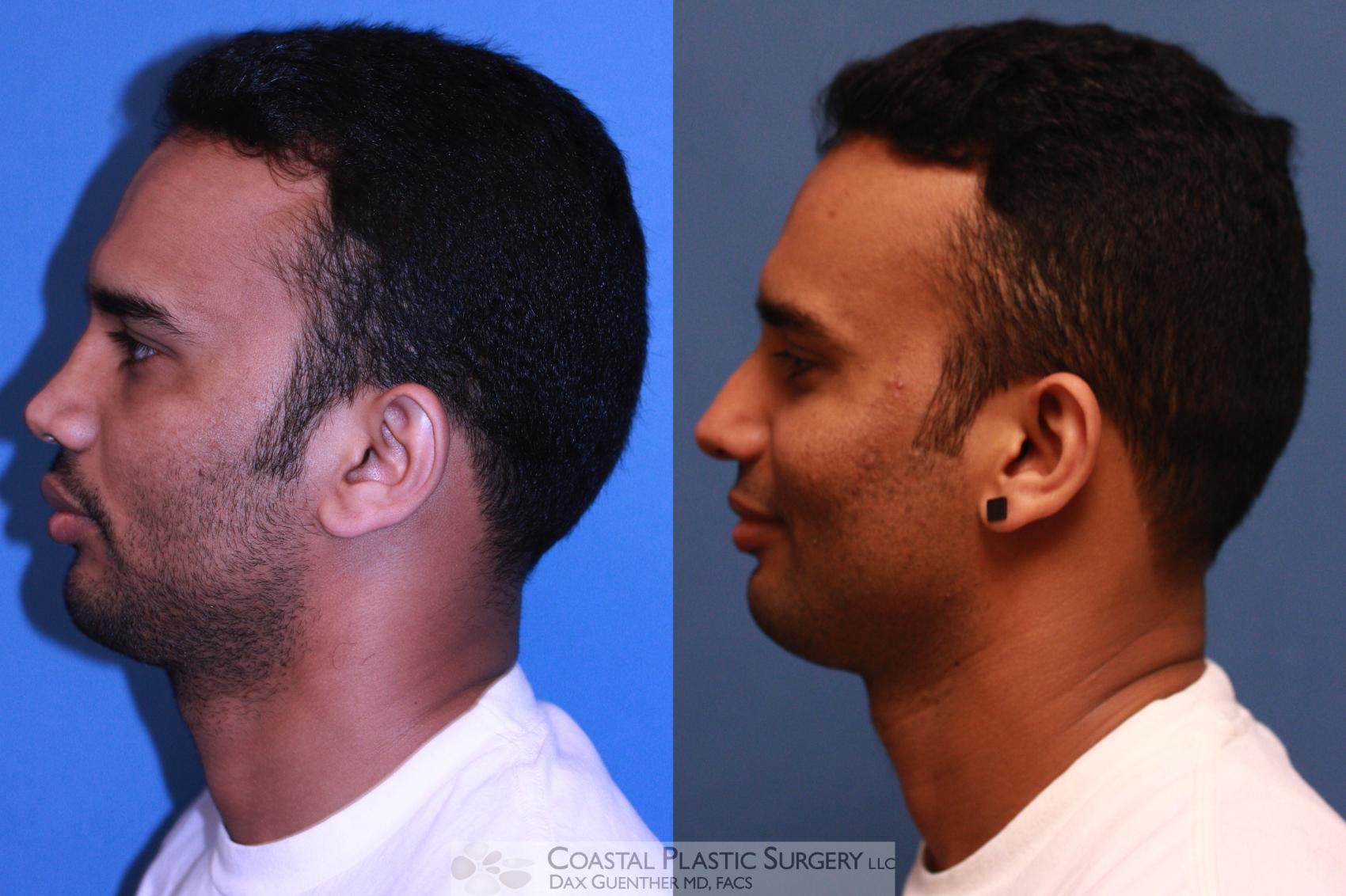The men and women considering rhinoplasty at my Boston practice are often concerned about the recovery period. That’s understandable; the thought of elective surgery can be both exciting and anxiety-provoking for many people. I’ve found that the patients who are realistic about what to expect during recovery and prepare for their downtime usually have a more comfortable experience. To help you better prepare, let’s talk a bit about the rhinoplasty healing process, from recovery phases to tips for a smooth recovery.
How Long Does Rhinoplasty Take To Heal?
Rhinoplasty recovery time can generally be divided into three stages:
- Physical Downtime
- Social Downtime
- Final Recovery
Physical downtime is the critical postoperative rest period before most patients are well enough to return to work and school (usually after a week). You may have rubber splints placed inside your nostrils for support and will be advised to keep your head elevated at all times (including during sleep) to minimize bleeding and swelling.
While not necessarily painful, the physical downtime period is often uncomfortable. Your face will be tender, swollen, and bruised, and you may experience sinus headaches due to a “stuffy” nose that may take 2 to 3 months to clear. You can find tips for easing your recovery in my related blog post.
Social downtime is the second phase of recovery, where you may be feeling physically better but aren’t yet comfortable with being seen in public. Some patients will choose to work from home for a few more days until the cosmetic bruising fades, while others may feel okay going out with makeup. How long this period lasts will ultimately depend on you.
The final recovery period can last between 6 months and a year as the residual swelling (usually only noticeable to you after a few weeks) gradually dissipates. Your final results will continue to emerge during this time with little to no disruption to your daily routines.
Rhinoplasty Recovery Tips
It may seem like the postoperative period comes with a laundry list of restrictions, but that doesn’t mean you still can’t enjoy yourself. Here are some of my top tips to maximize your rhinoplasty recovery.
Play Tourist
Social downtime got you feeling … down? Even if you don’t feel up to going out in public just yet, you can find interesting ways to engage your curiosity. Take advantage of your downtime and do things you may not consider when you’re wrapped up in the hustle and bustle of your everyday life. Tackle your to-be-read pile, listen to a serial podcast, or explore a new hobby. In Boston, several local museums offer virtual tours, and the National Park Service has a number of free self-guided audio tours.
Keep Your Final Results in Mind
There may come a time early in your recovery when self-doubt starts to creep in. Did you make the right choice to have a rhinoplasty? What if it doesn’t look the way you think it will? Reminding yourself that recovery is temporary can help, as can remembering why you chose to have a rhinoplasty. Some people look at rhinoplasty before and after pictures to reassure themselves and regain some of the excitement about their potential results.
Take In The View
It will take up to 6 weeks before you are back to doing strenuous exercises or contact sports. However, I encourage you to go for daily walks to help with circulation and swelling. If you can get out into nature, that’s even better, as green space is great for your mood—and your health.
Enjoy The Process
Physical health begins and ends with mental and emotional well-being. A positive mindset and realistic expectations about the healing process can go a long way toward making your rhinoplasty recovery the smooth, restful time you deserve.
Curious about how rhinoplasty can transform your appearance? See more before and after photos in our photo gallery to get an idea of the results my patients enjoy. And if you’re ready to take the next step, please request a consultation or call us at (781) 740-7840 .





Leave a Reply